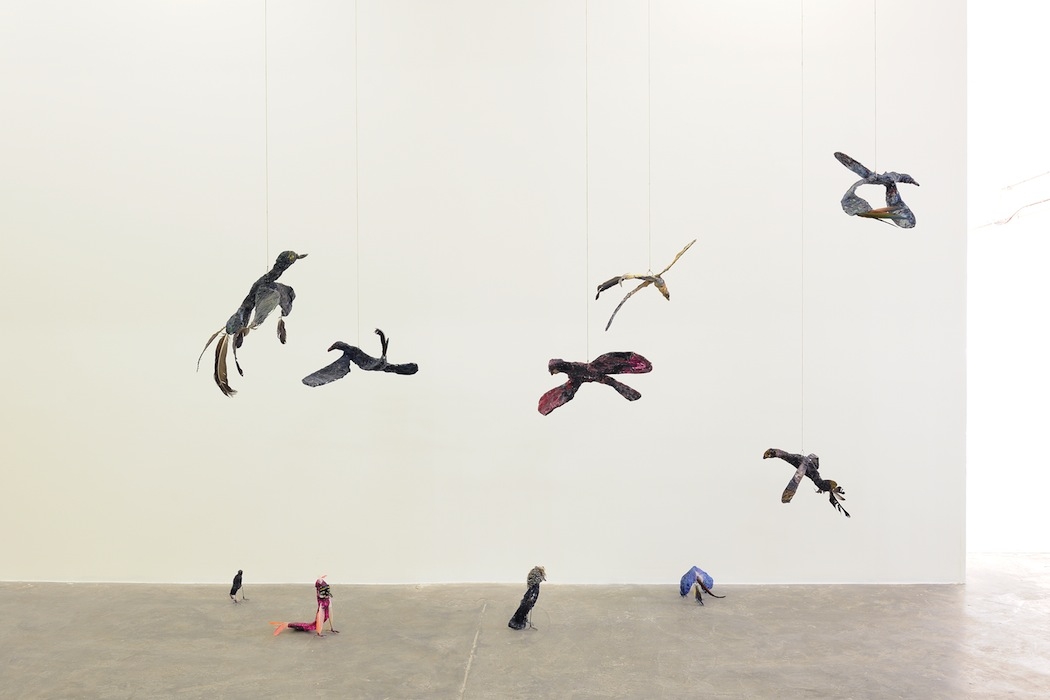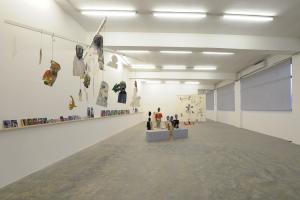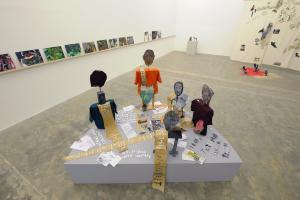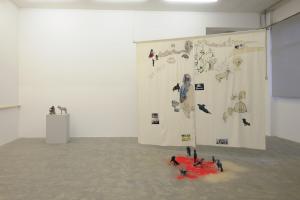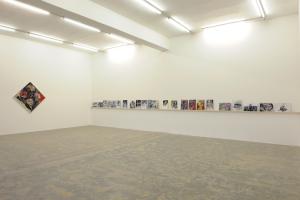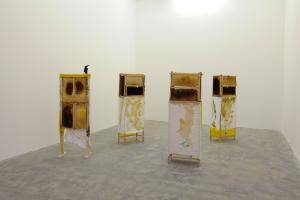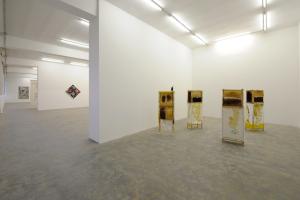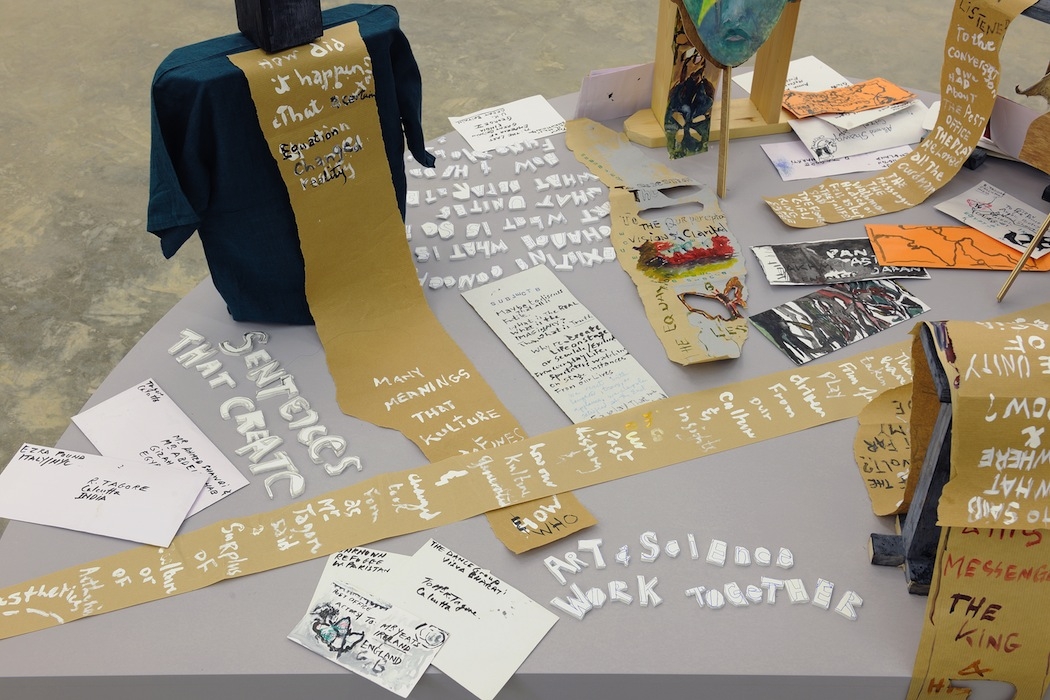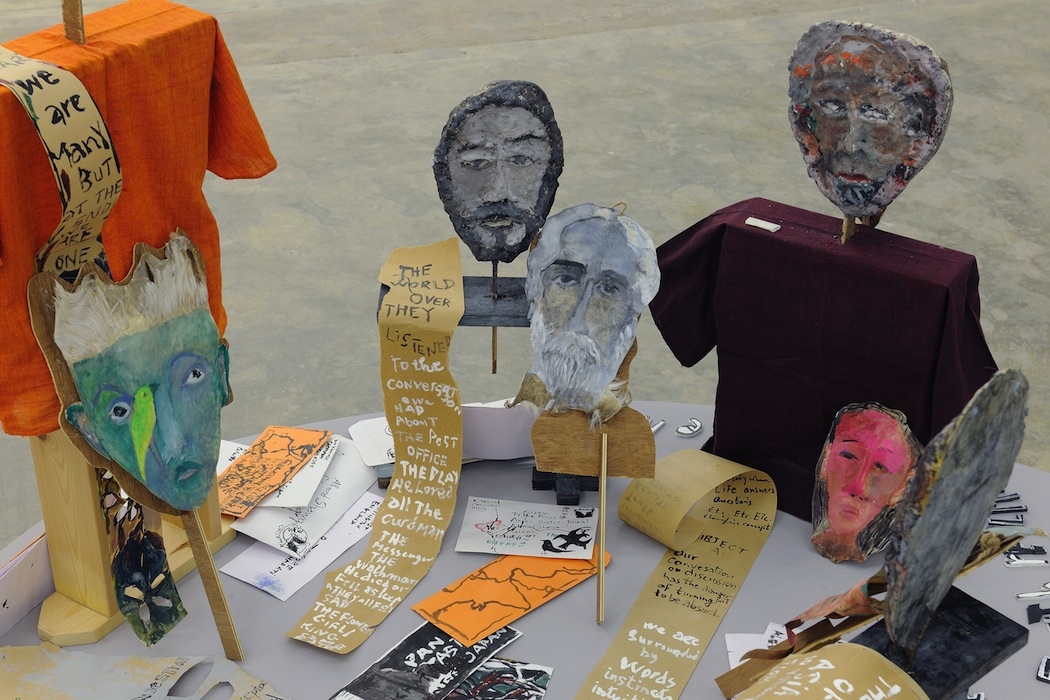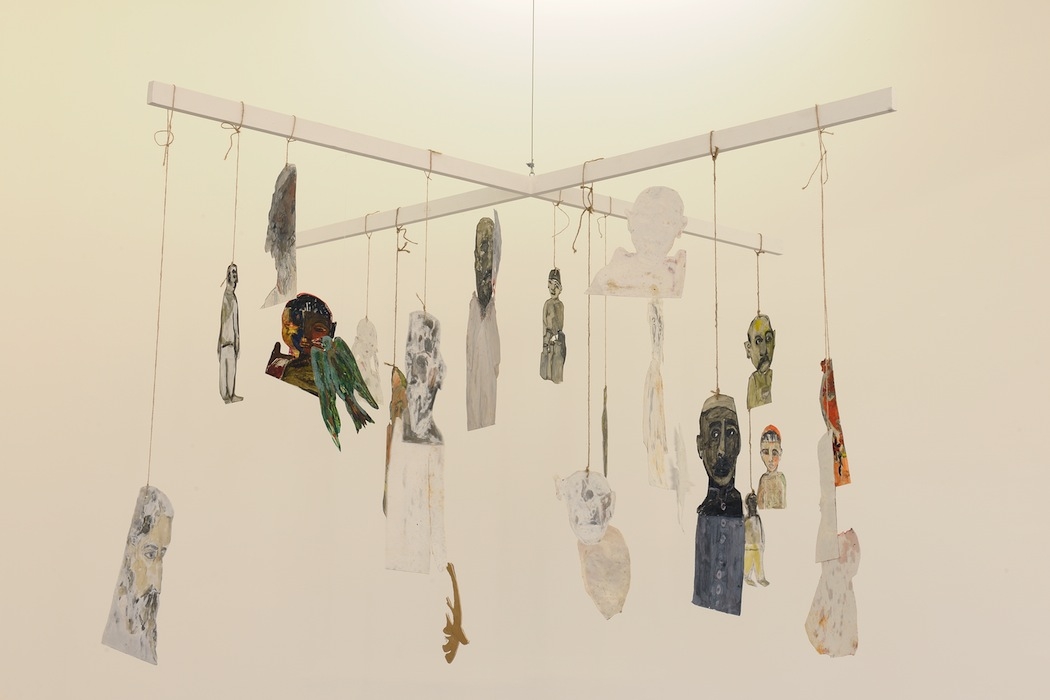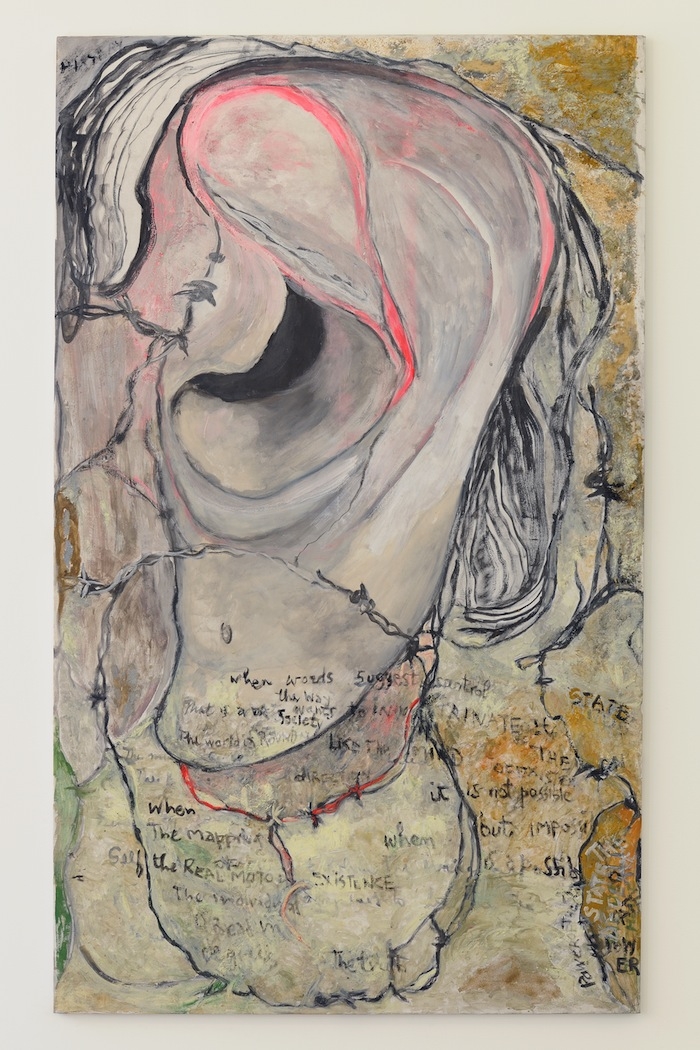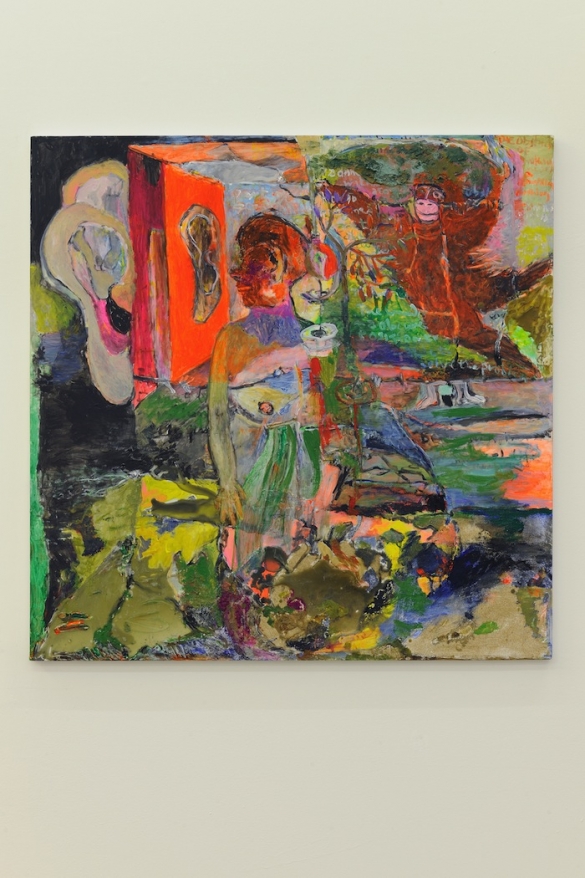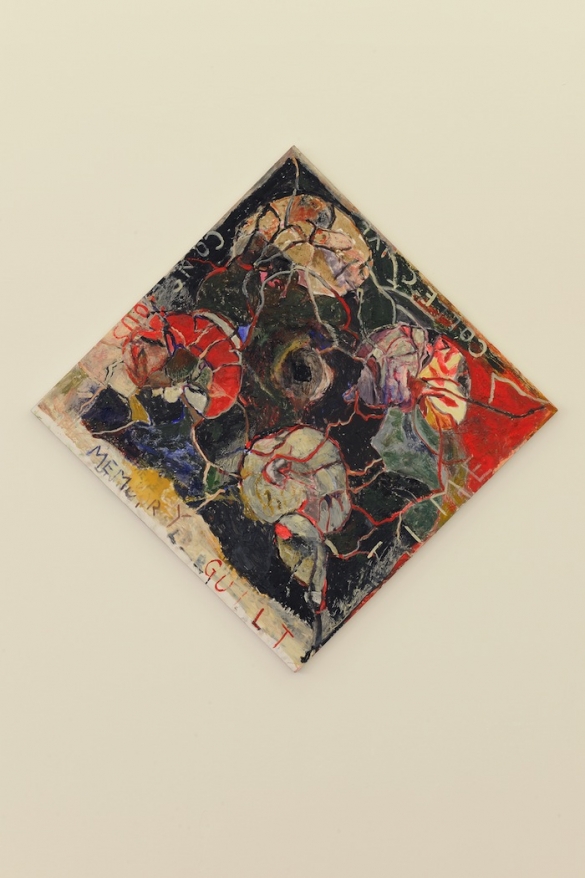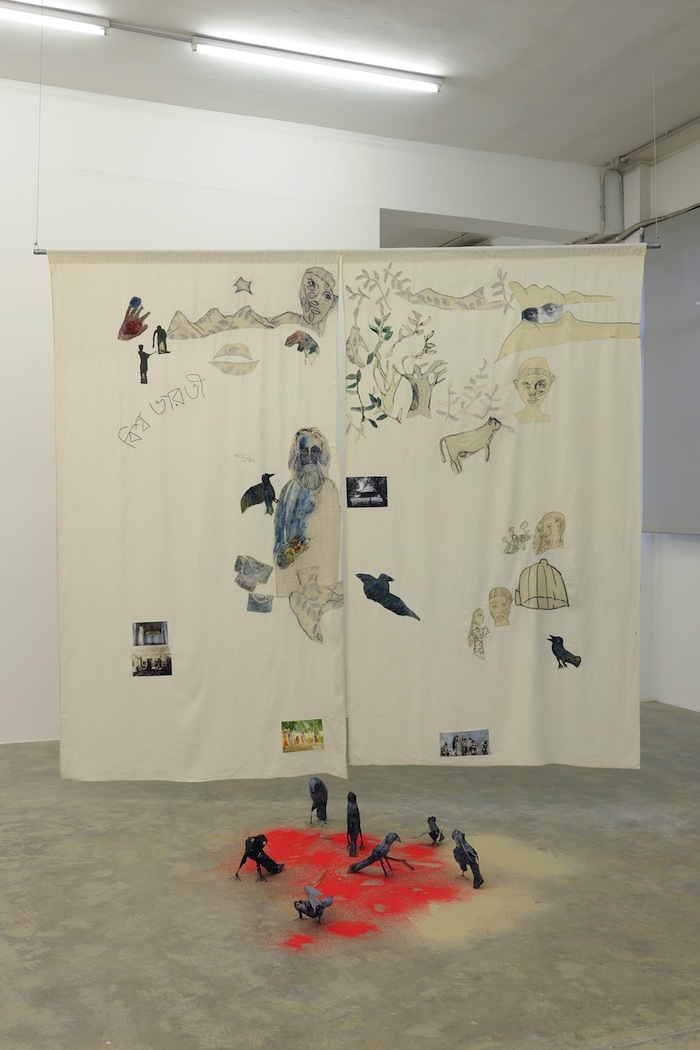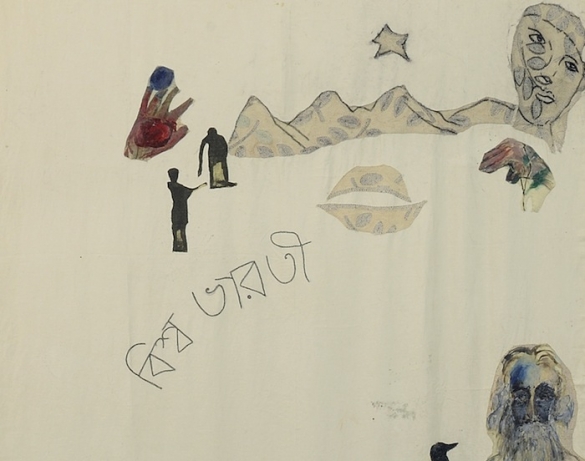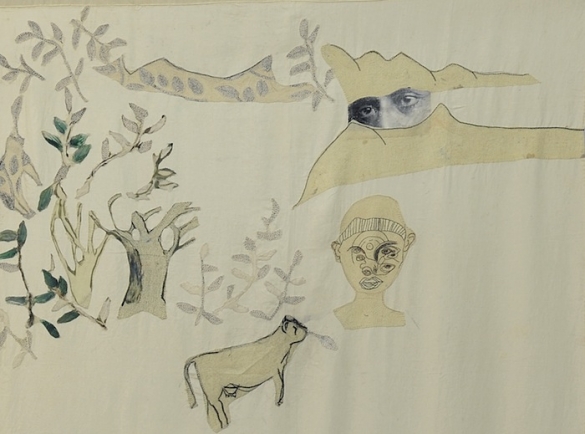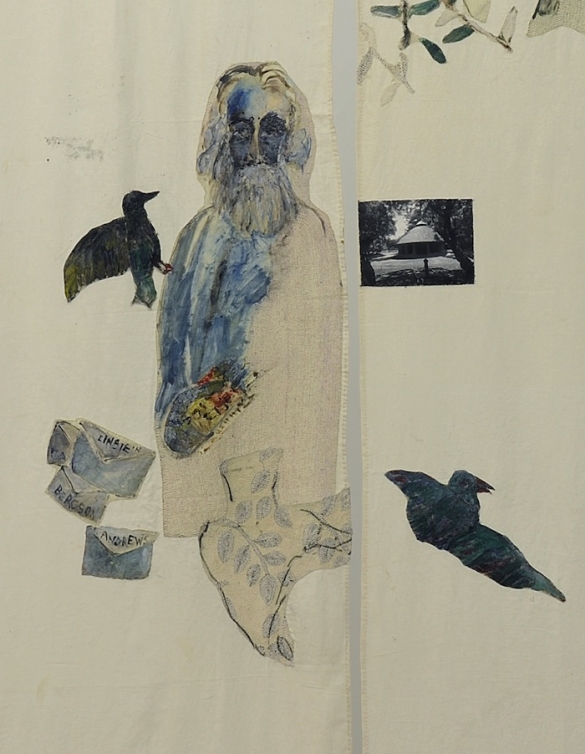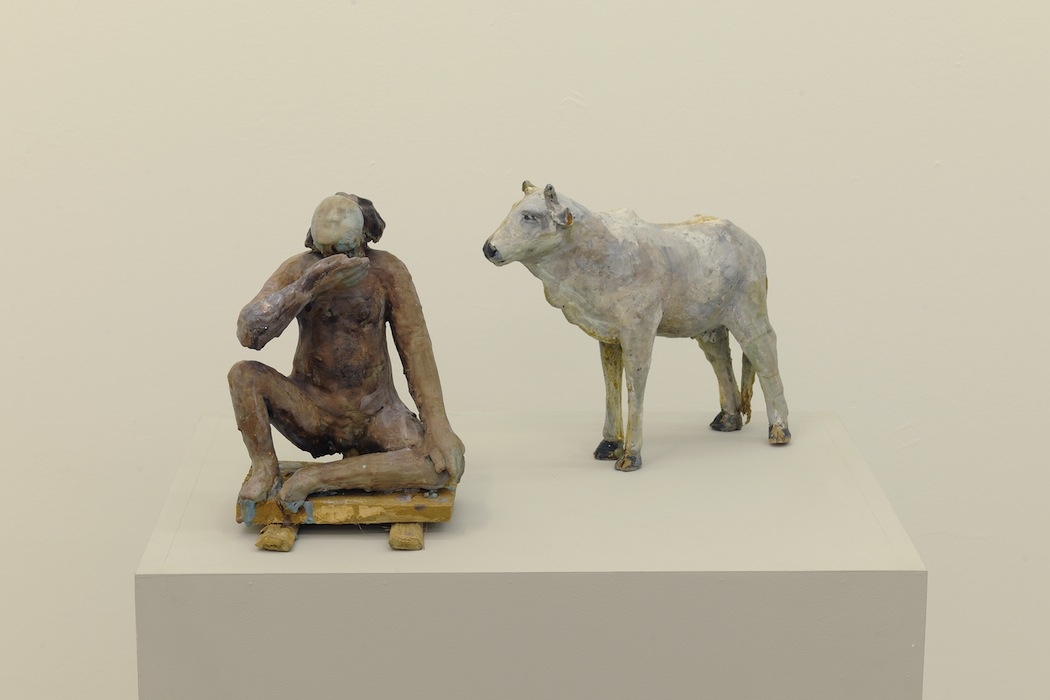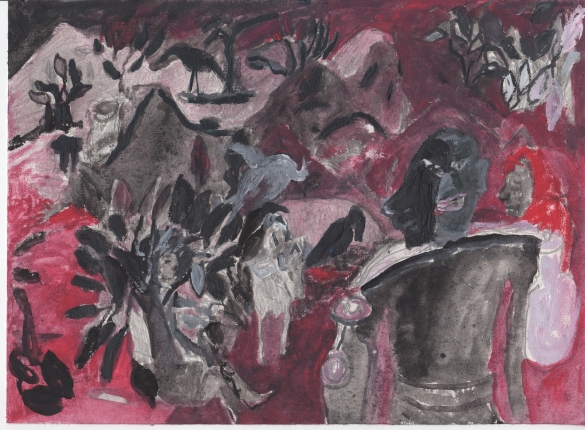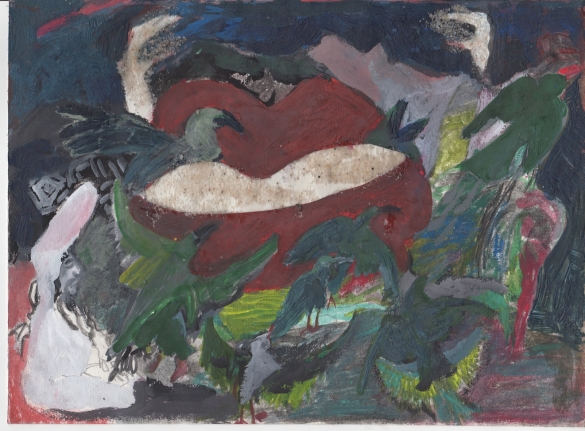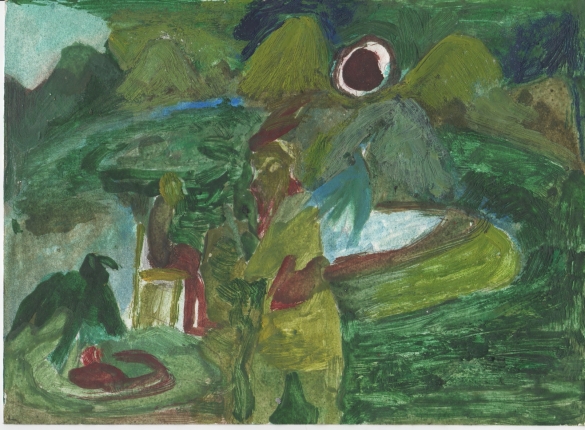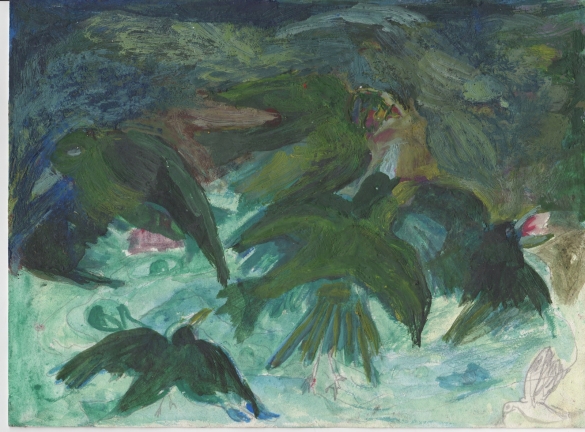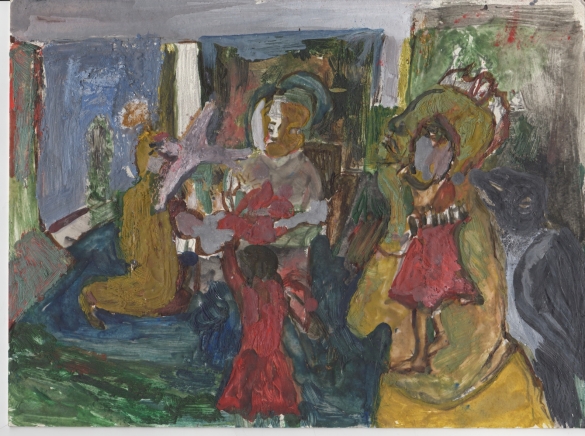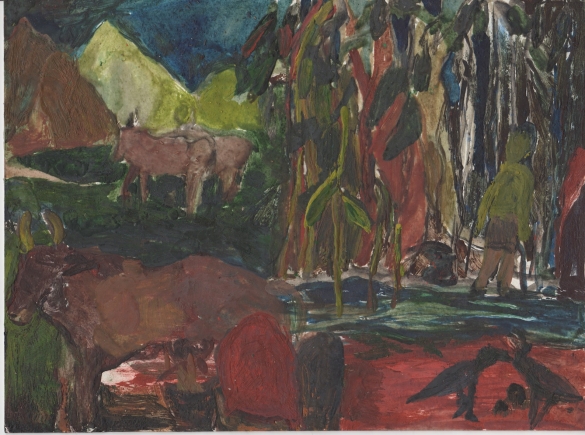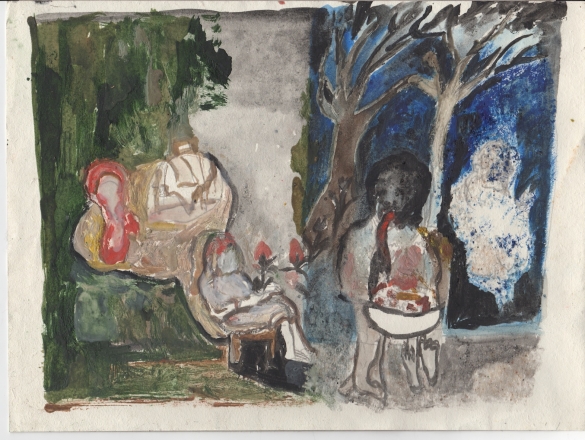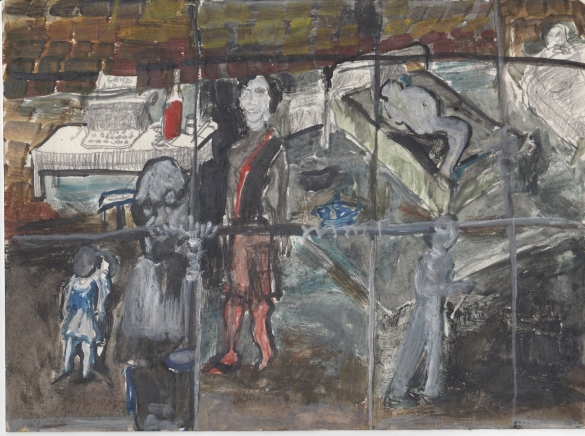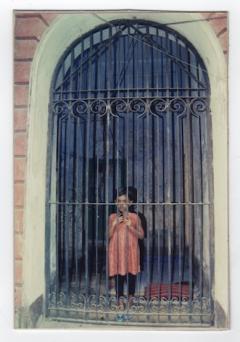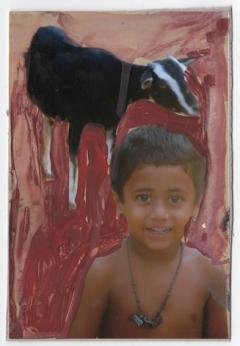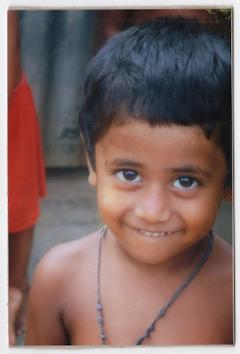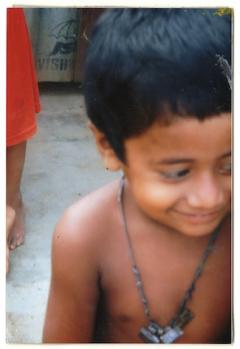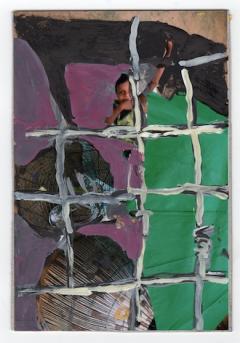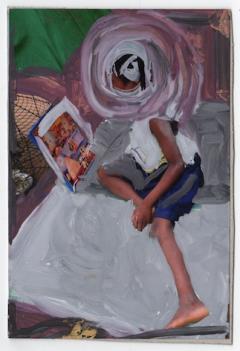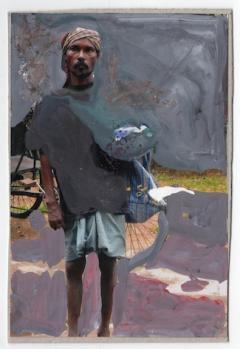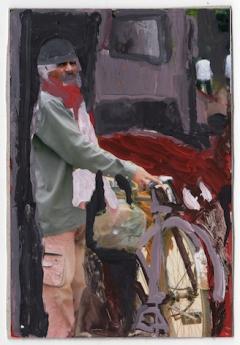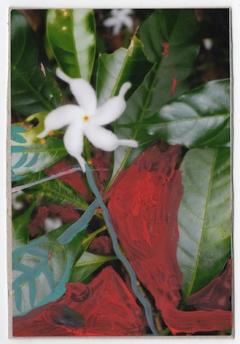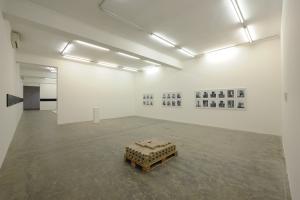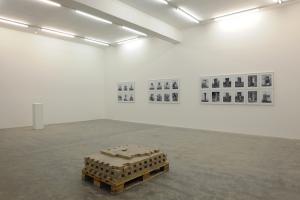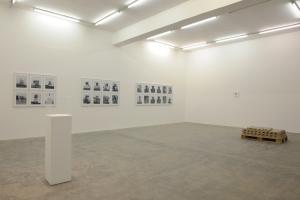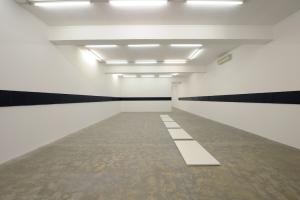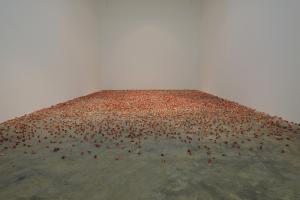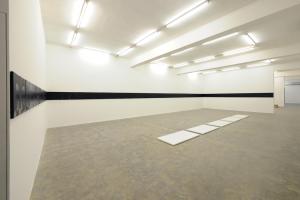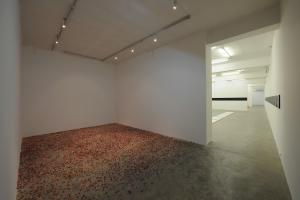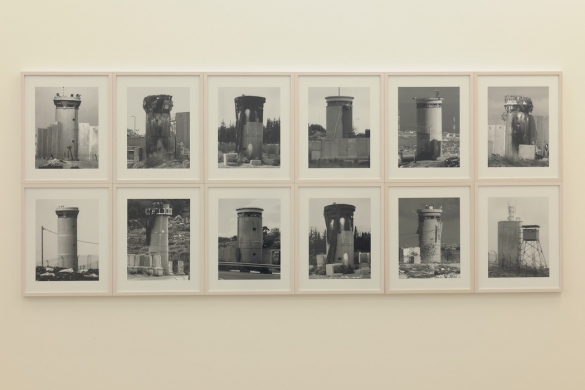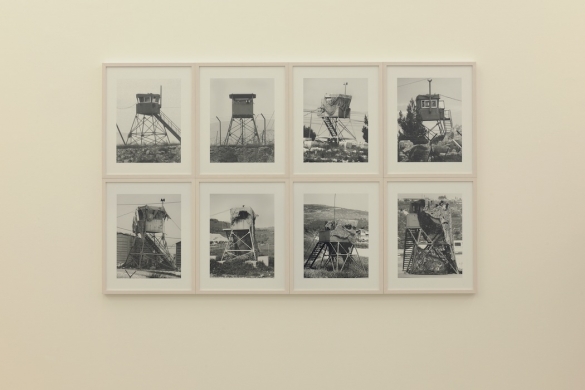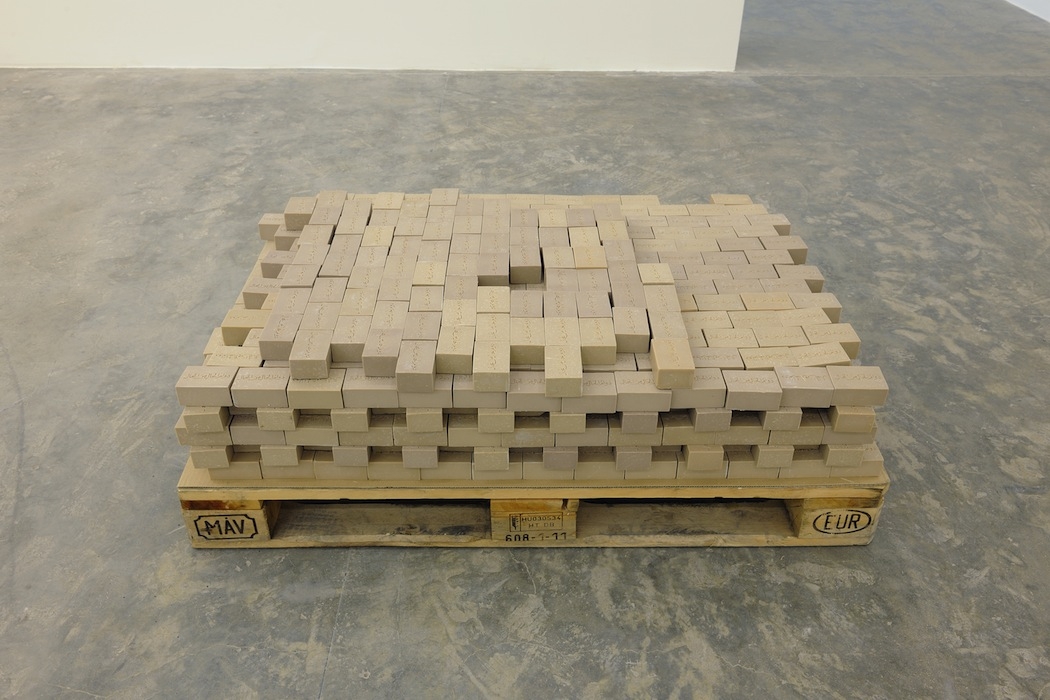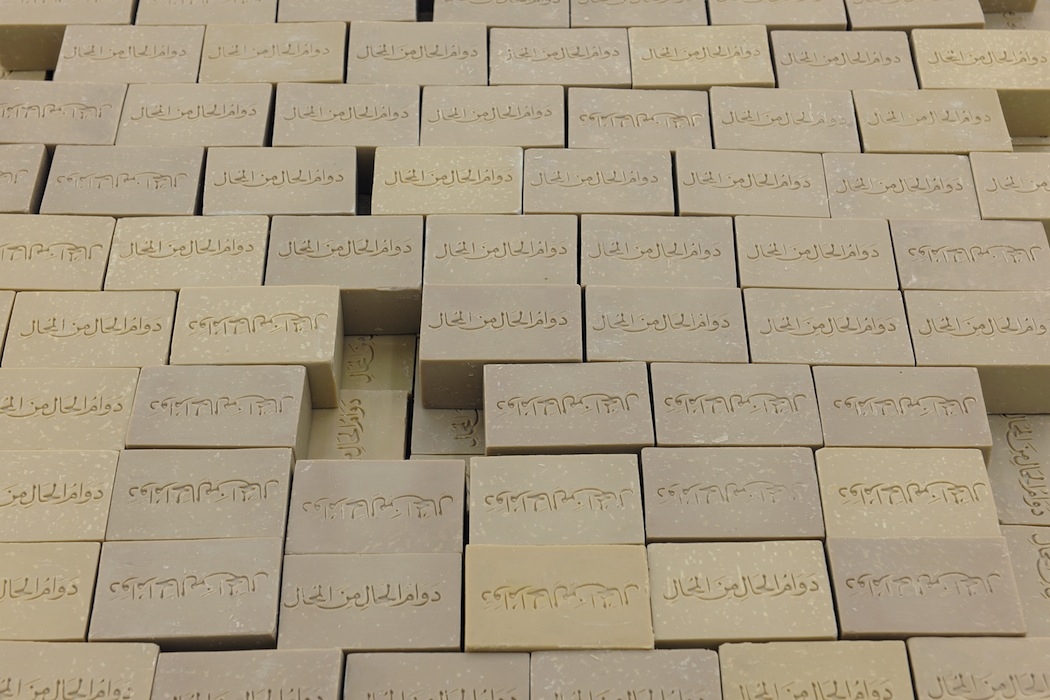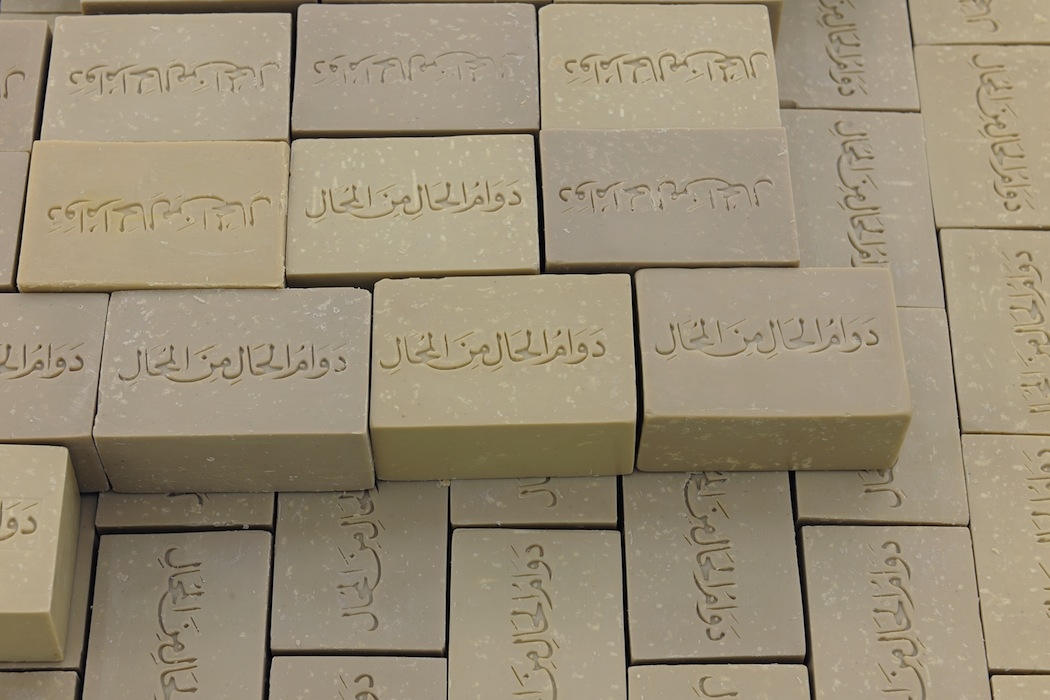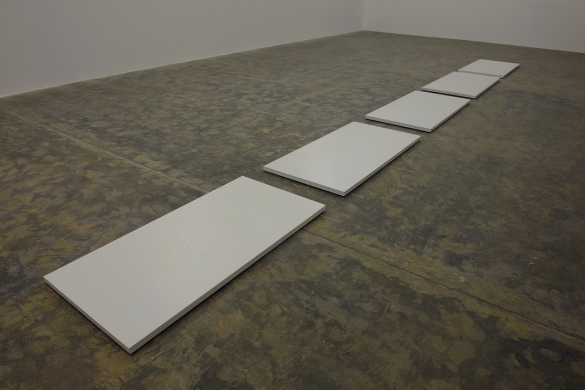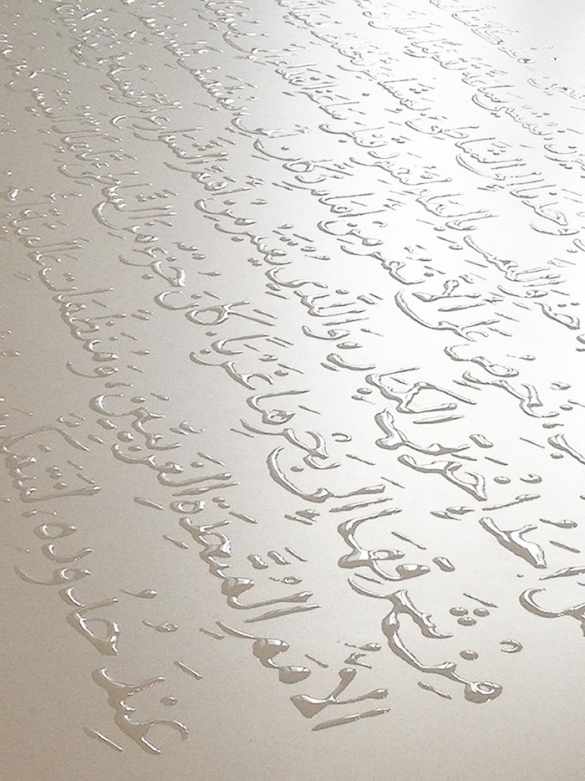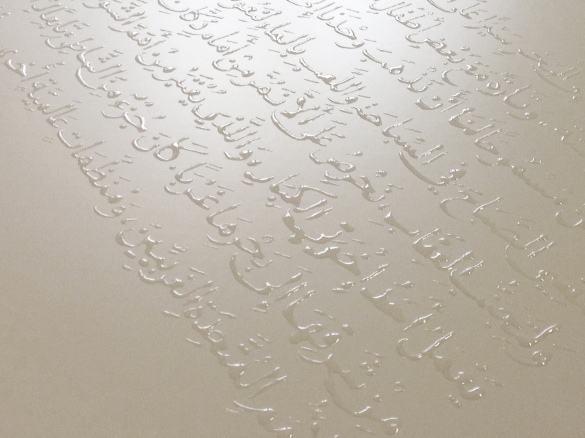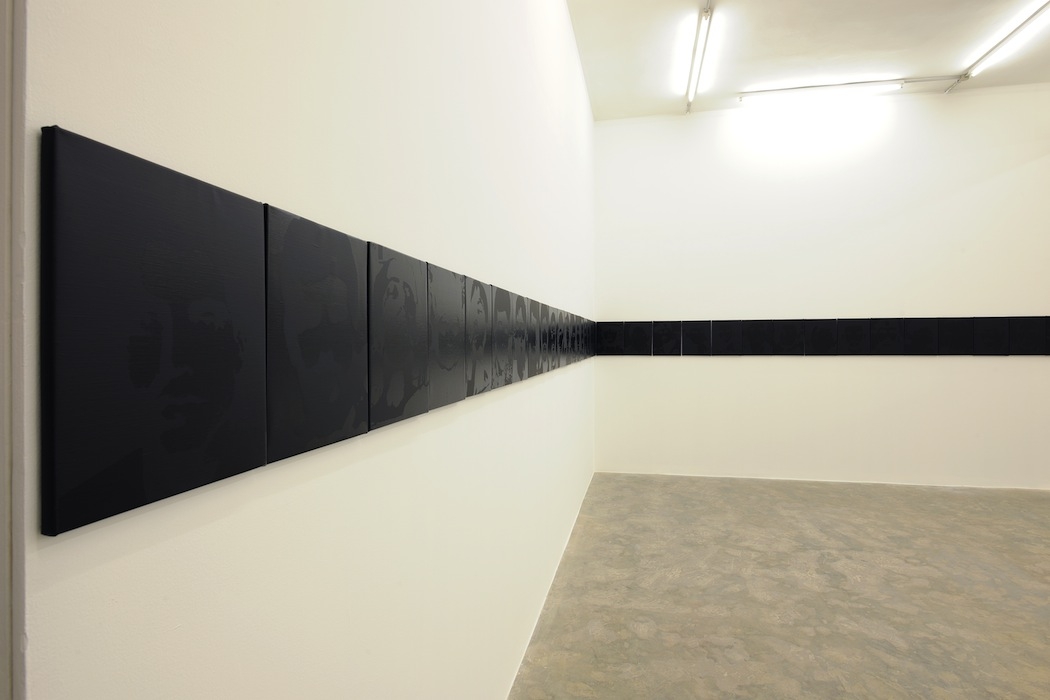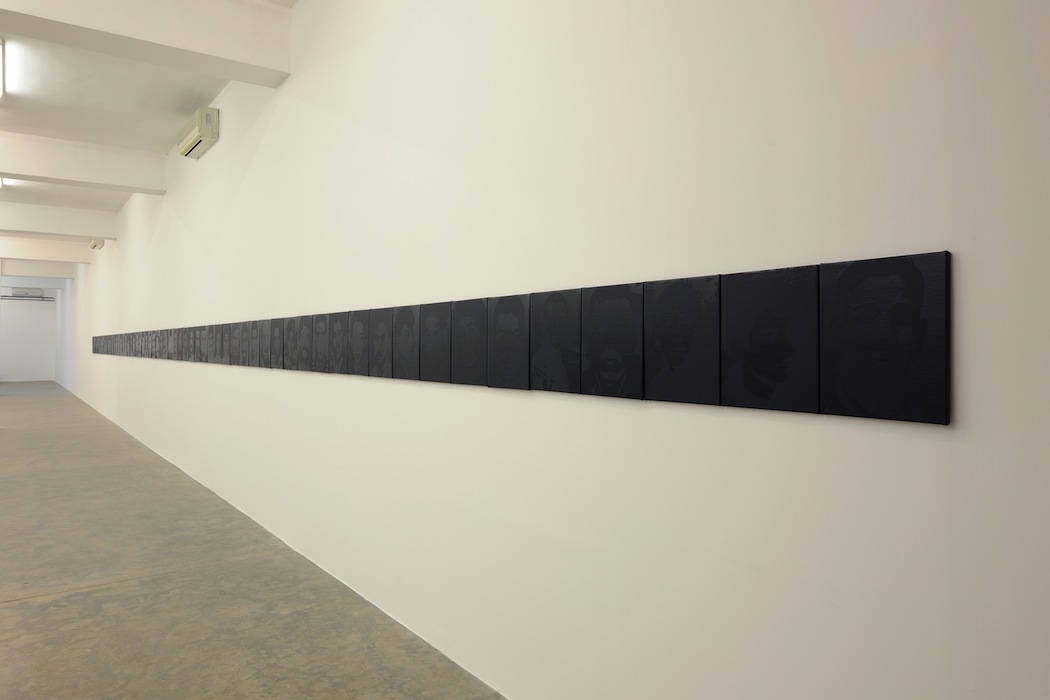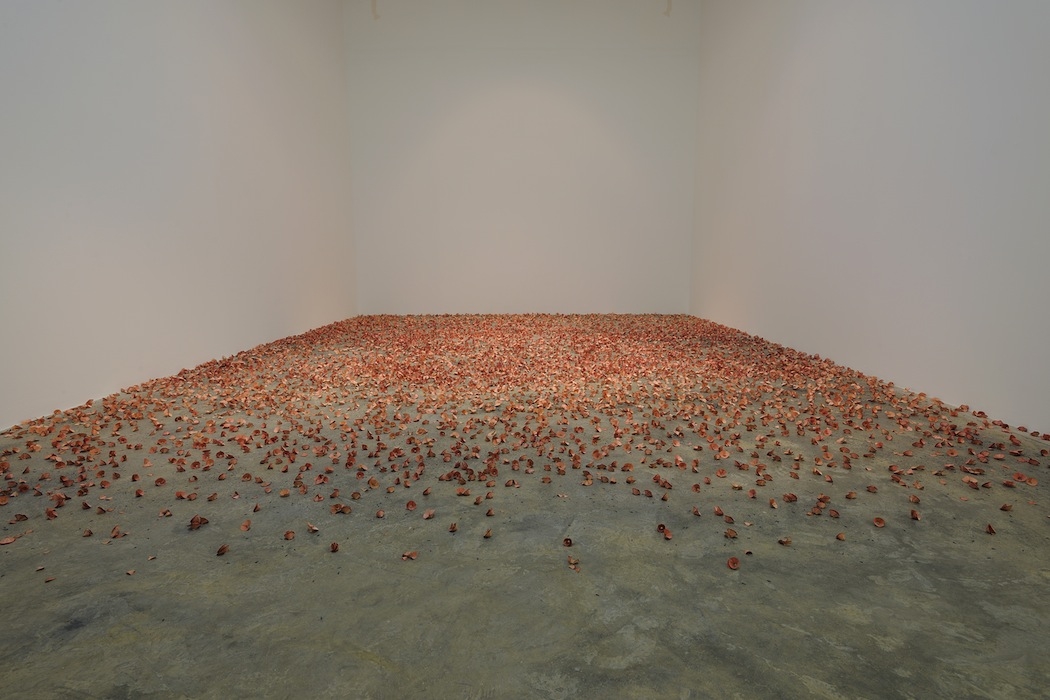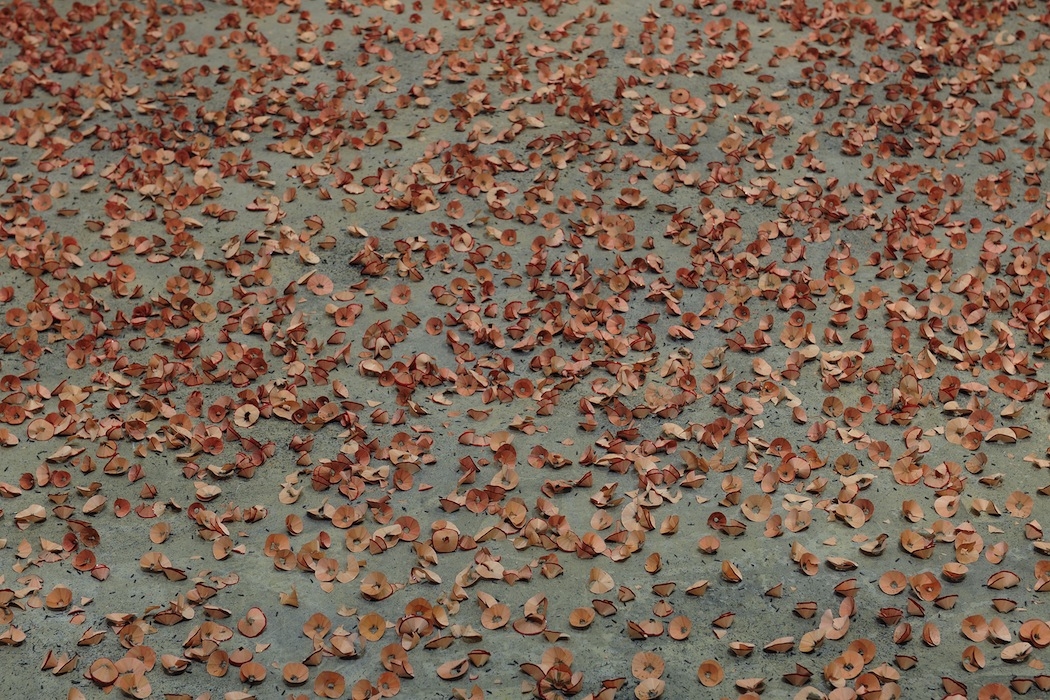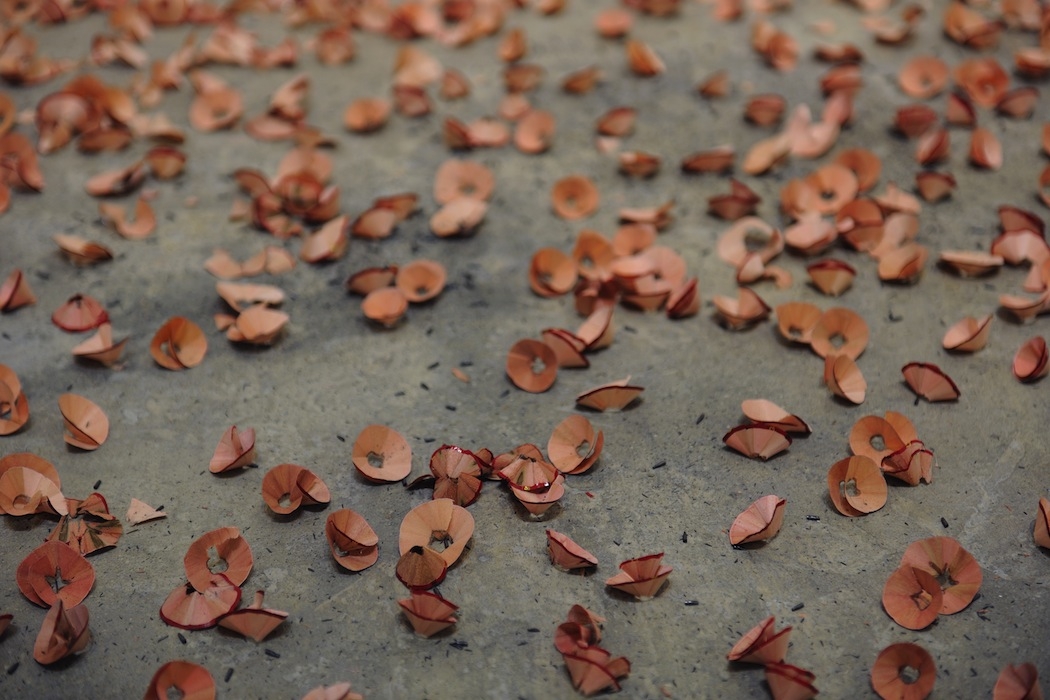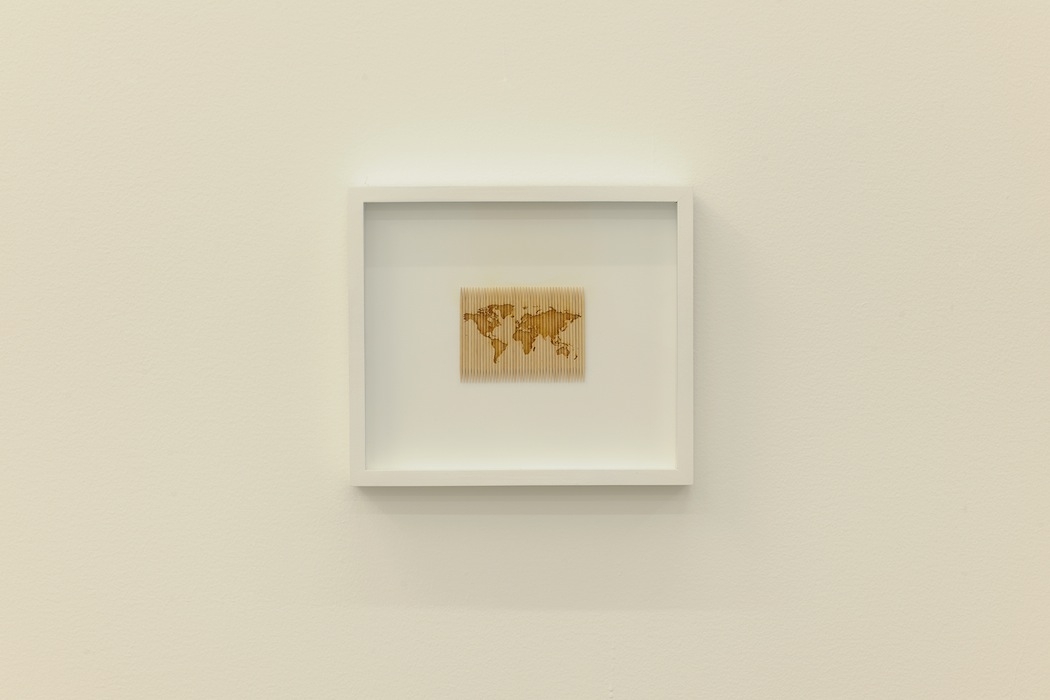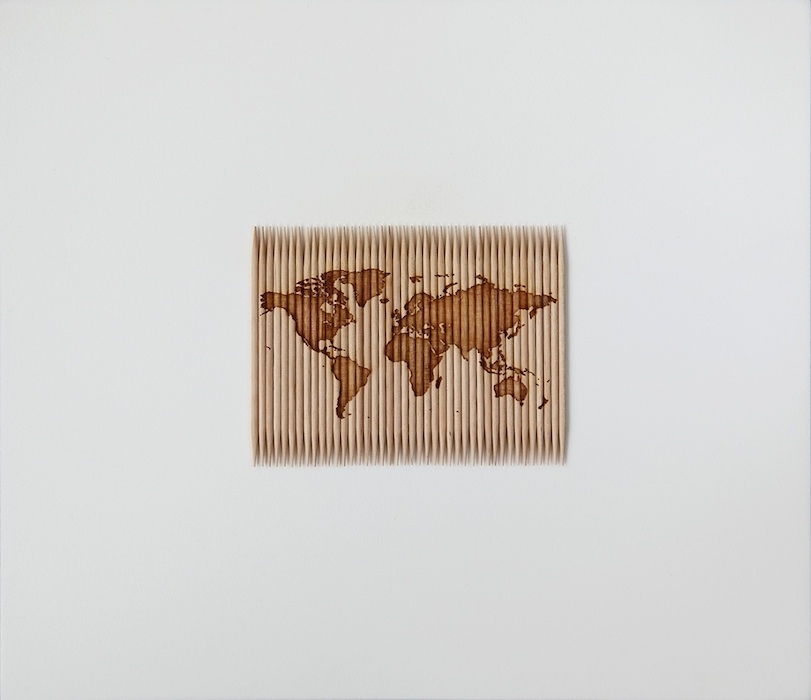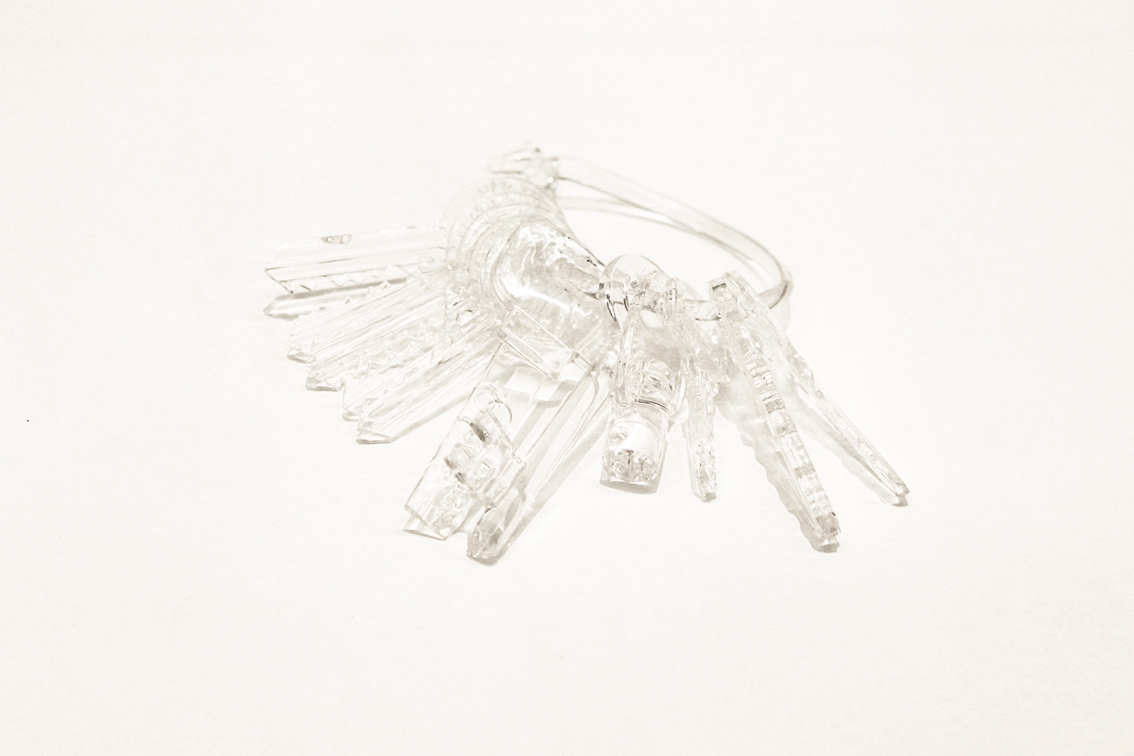Anna Boghiguian and Taysir Batniji-Gallery
Boghiguian’s work was first shown in Catherine David’s Contemporary Arab Representations, beginning in 2003 in Rotterdam. Attracting much attention and acclaim, her drawings also stirred political debate and controversy, especially in her native Egypt. Boghiguian was born in 1946, an Armenian in Cairo, yet never adopted the city as her only home, continuing to have a conflicting relationship with the city today. Living a nomadic life, the artist has constantly moved from city to city across the globe, from Egypt to Canada and India to France. Immersing herself in the sights and sounds of the city, as well as the literature, poetry and politics of its people, the artist nonetheless remained distant, an outsider in a busy metropolis. Her work offers a unique third person yet omniscient view of modern urban communities.
Anna Boghiguian’s works are dense compositions. In them are often text, images, collected photographs and other documentary material closely interwoven. The intense colors and her spontaneous and expressive drawings are reminiscent of diary entries. They seem to visualize and record momentary experience and perception in its various facets.
The gallery will be showing her work in many different media from sculptures and textile works to paintings and drawings. The exhibition will include many works Boghiguian has made in Beirut with direct references to the city and its people. Her recent work has focused on the human ear and a medium to receive and process knowledge of a society and its environment. As an observer, Boghiguian’s ear takes in the chatter of people and the bustle of the city. It goes unnoticed of its activity, silently collecting information making the urban experience even more vivid.
Anna Boghiguian studied political science at the American University of Cairo, Egypt and received her BFA in Fine Arts and Music at Concordia University in Montreal, Canada. She has participated in international group exhibitions such as Contemporary Arab Representation (2003-04) curated by Catherine David, which travelled through various European cities, the 11th Istanbul Biennial curated by WHW, and dOCUMENTA (13)... As part of her DAAD scholarship she had a solo show at the daadgalerie, Berlin in March 2013. Her work had a major presence in Documenta 13 (Kassel, 2012) and she has since been shown at University of Chicago, who acquired a large body of her work, NGBK (Berlin, 2014), INIVA (London, 2013), and most recently included a group exhibition at the New Museum (New York, 2014)…
TAYSIR BATNIJI
Memory is Evergreen
The Gazan born artist, Taysir Batniji, has become one of Palestine’s leading conceptual artists. Batniji first left Gaza at 25 years old, and has travelled intermittently between his current home of Paris and his native Palestine. His displacement between two cities and two cultures has a strong influence on his work and artistic identity – a person and a practice within and without a country, a conflict, and a memory.
The show revolves around the dualities that have shaped Batniji’s life. His work looks at life in between worlds, with one living in the political situation and the other fading away from it. Batniji explores these concepts in several different media. Yet each medium has unstable and unsustainable characteristics. The entrance of the gallery features an installation of traditional natural soap to be distributed to visitors. The soaps are inscribed with an Arabic saying that translates to, “no condition is permanent”. The work is set in a block, resembling a brick wall, however, it contradicts this as it is in its nature to dissolve. The deception in the viewer’s perception is also seen in his untitled work of silkscreens that sprawl across the gallery walls in a single line. At first sight the work appears to be a dark blank line, but once the perspective is changed, the blackened faces of Palestinian martyrs from the second Intifada appear. Like forgotten ghosts, their faces fade in between the visible and invisible
Batniji often works with media that disappear or disintegrate over time. In his performance installation, Hanoun (a Palestinian poppy), which was first presented in the Palestinian Pavillion at the Venice Biennale in 2009, Batniji demonstrates the impermanence of life and memory. Inspired by a childhood memory of sharpening pencils in order to avoid completing an assignment, the artist indulges in an almost cathartic ritual of sharpening the pencil and leaving the discarded blooms of fragile shavings to fall to the floor. The work carries strong symbolism to fallen fighters, which the poppy traditionally represents. Hannoun can be seen as an intimate space of meditation, yet it is still inaccessible. This draws on Taysir state of flux in between Gaza and Paris. His practice is intrinsically linked to Gaza yet he is unable to have a stable practice there.
Gaza has become a real yet unreachable place of production. Paris, or elsewhere, offers the possibility of production without the physical space to realize it. Just as an atelier is a space in which to elaborate, construct and work, Hannoun is “the attempt of an oeuvre” where what we perceive is not a finished product but rather the traces of its possible realization.
Taysir Batniji (born1966, Gaza, Palestine) received his BFA from Al Najah University. He went on to study in Italy and France. He participated in the Venice Biennale (2003, 2009 & 2011), the Istanbul Biennial (2012), along with solo exhibitions at Espace Culturel Robert de Lamanon (Marseille, 2013), La BF15 (Lyon, 2012), Musée d'Art et d'Histoire (Geneva, 2007) , and Witte de With Center for Contemporary Art (Rotterdam, 2004). He has been included in group shows at the Fotohof (Salzburg, 2013), Villa Medici (Rome, 2012) CCA Wattis (San Francisco, 2012), Kunstwerke (Berlin, 2011), Institut du Monde Arabe (Paris, 2009), and many others. His work was acquired by the collections of the Centre Georges Pompidou, FNAC, France, the Victoria & Albert Museum, and Fondation Louis Vuitton, among others.
